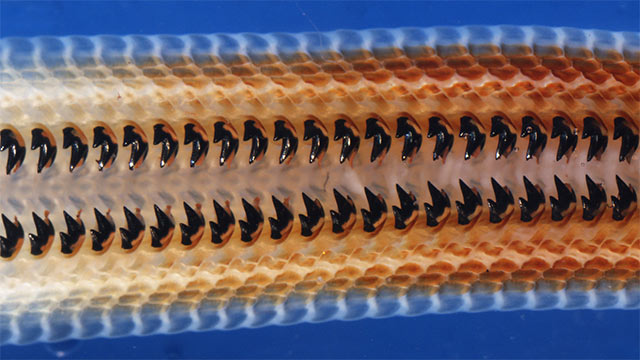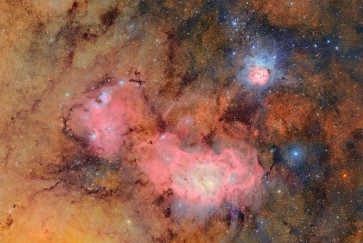Northwestern University researchers have, for the first time, discovered a rare mineral hidden inside the teeth of a chiton, a large mollusk found along rocky coastlines. Before this strange surprise, the iron mineral, called santabarbaraite, only had been documented in rocks.
The new finding helps understand how the whole chiton tooth — not just the ultrahard, durable cusp — is designed to endure chewing on rocks to feed. Based on minerals found in chiton teeth, the researchers developed a bio-inspired ink for 3D printing ultrahard, stiff and durable materials.
Derk Joester
“This mineral has only been observed in geological specimens in very tiny amounts and has never before been seen in a biological context,” said Northwestern’s Derk Joester, the study’s senior author. “It has high water content, which makes it strong with low density. We think this might toughen the teeth without adding a lot of weight.”
The study will be published this week in the Proceedings of the National Academy of Sciences.
Joester is an associate professor of materials science and engineering in Northwestern’s McCormick School of Engineering and a member of the Chemistry of Life Processes Institute. Linus Stegbauer, a former postdoctoral fellow in Joester’s laboratory, is the paper’s first author. At Northwestern during the research, Stegbauer is now a principal investigator at the Institute of Interfacial Process Engineering and Plasma Technology of the University of Stuttgart in Germany.
One of the hardest known materials in nature, chiton teeth are attached to a soft, flexible, tongue-like radula, which scrapes over rocks to collect algae and other food. Having long studied chiton teeth, Joester and his team most recently turned to Cryptochiton stelleri, a giant, reddish-brown chiton that is sometimes affectionately referred to as the “wandering meatloaf.”
To examine a tooth from Cryptochiton stelleri, Joester’s team collaborated with Ercan Alp, a senior scientist at Argonne National Laboratory’s Advanced Photon Source, to use the facility’s synchrotron Mössbauer spectroscopy as well as with Paul Smeets to use transmission electron microscopy at the Northwestern University Atomic and Nanoscale Characterization and Experiment (NUANCE) Center. They found santabarbaraite dispersed throughout the chiton’s upper stylus, a long, hollow structure that connects the head of the tooth to the flexible radula membrane.


